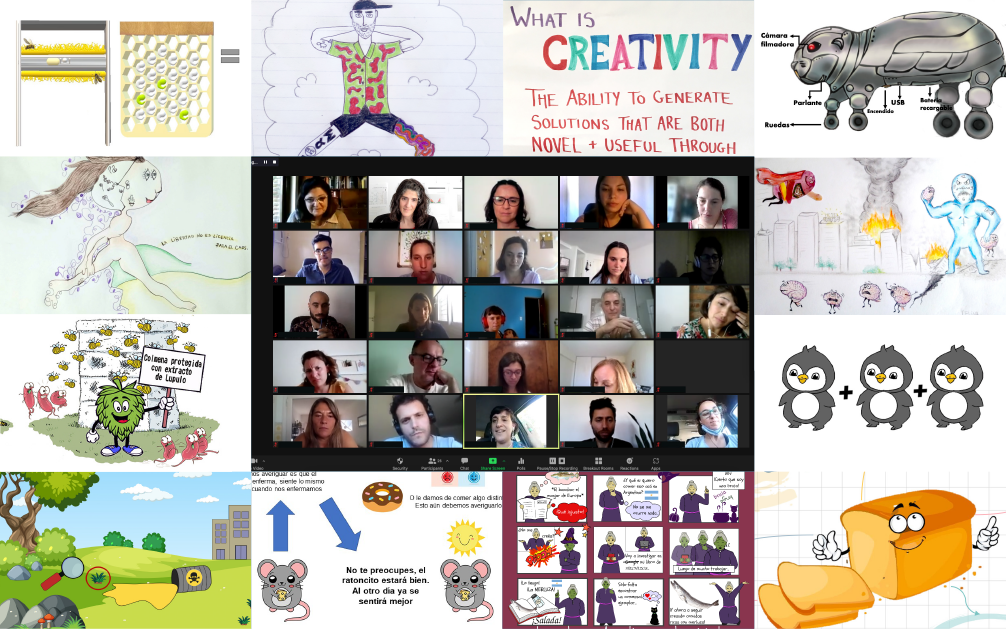
Teaching creativity and helping people – of any age, background, and level of experience – reconnect with their imagination and creative potential is an extremely rewarding experience. Throughout the journey, people change their perception about external (what the concept means) and internal (their own) creativity and gain confidence in who they are and their ideas. They move from conforming with the status quo or trying to fit into expected ways of being to celebrating their unique qualities and views.
However, the creativity journey isn’t always easy. While creativity is often associated with playful, fun, or artistic and brainstorming activities, thinking creatively is also hard work. Coming up with an imaginative idea – one that is fantastical, wild, improbable, or that breaks with accepted physical laws – is the first step; then we need to think about how such idea could be transformed into something doable and make it a reality. The part students struggle the most is allowing themselves to think of imaginative ideas. Some of them feel uncomfortable and call this activity a “waste of time,” and others even give up. The root of these strong reactions against creativity and imagination is often personal and in response to self-imposed constraints and judgements.
I have witnessed this behavior in many of my students (and of course in myself!). Encouraging self-reflection and having an open dialogue with the students is key for them to understand their main barriers and for us – the teachers – to determine how we could support them. In some cases, small changes in the curriculum, can lead to big changes for the students.
After having taught the Creativity & Science course to several cohorts of early-career scientists, the need for having a stronger emphasis on individual creativity to better support their scientific creativity journey became loud and clear. For this Fall, we made two major changes in the course structure and content:
- Stronger focus on everyday creativity
- Stronger focus on scientific imagination
During the first part of the course, discussions will unpack what creativity is and the common internal barriers that hinder people to reach their full creative potential. Later in the course, students will apply imaginative thinking and speculative design to build future scientific scenarios. As in the prior editions, reflective activities will focus on the development of metacognitive skills and the practice of cognitive mechanisms involved in creativity. Through these exercises, students will acquire the tools to bring creative thinking from the unconscious to the conscious when they need it. In other words, the course will provide an opportunity to experience a different way of seeing the world and science and learn how to practice creativity on-demand.
While the course continues to be elective for any early-career scientist enrolled in a science doctoral program in Argentina, one of its key requisites is willingness to step out of their comfort zone and dive deeper into unusual experiences – in other words, to be prepared to challenge the world as they know it!
Leave a comment